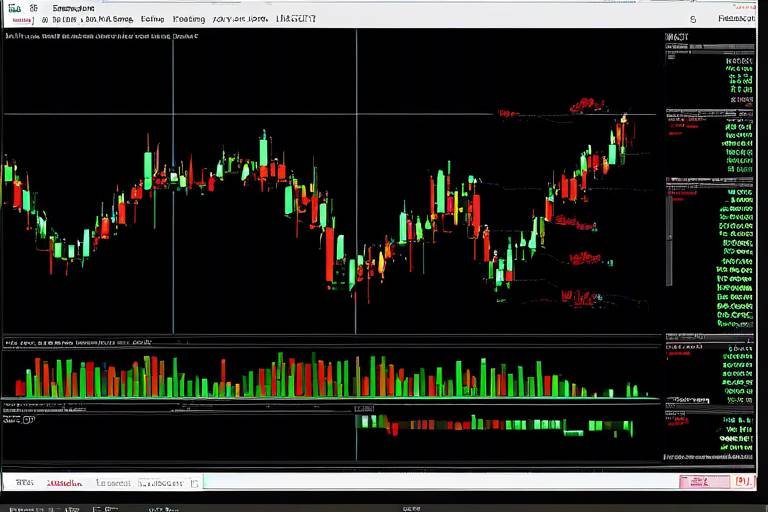Analyzing the Top 10 Cryptocurrencies by Market Capitalization
In the ever-evolving world of digital currencies, understanding the landscape can feel like navigating a labyrinth. With thousands of cryptocurrencies available, the top contenders by market capitalization often steal the spotlight. Market capitalization, or market cap, is essentially the total value of a cryptocurrency, calculated by multiplying the current price of a coin by its circulating supply. This metric not only reflects the overall health of a cryptocurrency but also serves as a barometer for potential investors looking to gauge the viability of their choices.
As we dive into the top 10 cryptocurrencies, we’ll explore their unique features, historical performance, and what sets them apart in this competitive market. From the trailblazing Bitcoin to the innovative Ethereum, each currency has its own story and significance. Are you ready to uncover the secrets behind these digital giants? Let’s get started!
Market capitalization is a critical metric in cryptocurrency, reflecting the total value of a coin or token. To put it simply, it’s like the price tag on a product, giving you an idea of its worth in the marketplace. Calculating market cap is straightforward: you multiply the current price of the cryptocurrency by the total number of coins in circulation. For instance, if a cryptocurrency is priced at $50 and there are 1 million coins available, its market cap would be $50 million.
Understanding market cap is essential for several reasons:
- Investment Insight: A higher market cap often indicates a more stable investment, while lower market caps can suggest higher volatility.
- Market Trends: Tracking changes in market cap can reveal trends and shifts in investor sentiment.
- Comparative Analysis: Market cap allows investors to compare the relative size and value of different cryptocurrencies.
In the cryptocurrency ecosystem, the market cap not only helps investors make informed decisions but also influences the overall perception of the currency’s legitimacy and potential for growth. Now that we have a grasp of what market capitalization entails, let’s explore the leading players in this digital arena.
As the first cryptocurrency, Bitcoin set the stage for digital currencies. Launched in 2009 by an anonymous figure known as Satoshi Nakamoto, Bitcoin introduced the world to the concept of decentralized digital currency. Its underlying technology, blockchain, ensures secure and transparent transactions without the need for intermediaries.
Bitcoin's enduring dominance in the market can be attributed to several factors:
- First-Mover Advantage: Being the first cryptocurrency, Bitcoin has gained widespread recognition and trust.
- Limited Supply: With a cap of 21 million coins, Bitcoin’s scarcity adds to its value proposition.
- Robust Security: The network’s security is bolstered by a large number of miners, making it difficult for malicious actors to compromise.
As we delve deeper into the crypto world, Bitcoin remains a cornerstone, influencing trends and market dynamics.
Ethereum took the cryptocurrency world by storm with its introduction of smart contracts, which are self-executing contracts with the terms of the agreement directly written into code. This innovation transformed how decentralized applications (dApps) operate, allowing developers to create a wide range of applications across various sectors.
Ethereum’s impact on the blockchain landscape is profound. With its flexibility and adaptability, it has become the go-to platform for developers. The rise of decentralized finance (DeFi) and non-fungible tokens (NFTs) can largely be attributed to Ethereum’s groundbreaking technology. Its native currency, Ether (ETH), fuels transactions and applications within the network, creating a vibrant ecosystem.
Tether (USDT) serves as a bridge between fiat and cryptocurrencies, maintaining a stable value pegged to the U.S. dollar. This stability makes it an attractive option for traders looking to hedge against the volatility of other cryptocurrencies. Tether’s mechanism involves holding reserves equivalent to the amount of USDT in circulation, ensuring that each token can be redeemed for one dollar.
However, Tether has faced controversies surrounding its reserves and transparency. Questions about whether it truly holds enough assets to back its tokens have led to scrutiny from regulators and the public alike. Despite these challenges, Tether remains a crucial player in the crypto market, facilitating trading and liquidity.
Here are some common questions about the top cryptocurrencies:
- What is market capitalization? Market capitalization is the total value of a cryptocurrency, calculated by multiplying its current price by the circulating supply.
- Why is Bitcoin so popular? Bitcoin is popular due to its first-mover advantage, limited supply, and robust security.
- What are smart contracts? Smart contracts are self-executing contracts with the terms of the agreement directly written into code, enabling decentralized applications.
- What is the purpose of Tether? Tether acts as a stablecoin, providing a stable value and bridging the gap between fiat and cryptocurrencies.

Overview of Market Capitalization
Market capitalization, often referred to as market cap, is a crucial metric in the world of cryptocurrencies. It essentially represents the total value of a cryptocurrency, calculated by multiplying the current price of a coin by its circulating supply. For instance, if a cryptocurrency has a price of $10 and there are 1 million coins in circulation, its market cap would be $10 million. This simple formula provides a snapshot of a cryptocurrency's size and significance within the ever-evolving digital currency landscape.
Understanding market capitalization is vital for investors and enthusiasts alike. It offers insights into a cryptocurrency's market position and can help gauge its potential for growth or decline. In the crypto space, market cap is often categorized into three segments:
- Large-cap cryptocurrencies: Typically those with a market cap over $10 billion, these coins are considered more stable and less volatile. Bitcoin and Ethereum are prime examples.
- Mid-cap cryptocurrencies: Ranging from $1 billion to $10 billion, these assets can offer more significant growth potential but come with increased risk.
- Small-cap cryptocurrencies: With market caps below $1 billion, these coins can be highly volatile and speculative, but they might also present unique opportunities for high returns.
Market cap serves as a barometer for the overall health of the cryptocurrency market. When the total market cap rises, it indicates increased investor interest and confidence in digital currencies. Conversely, a declining market cap might signal market corrections or a loss of faith in specific assets. It's also worth noting that market cap is not the only indicator of a cryptocurrency's value; factors such as technology, adoption rate, and community support play significant roles as well.
To provide a clearer picture, let's take a look at a table summarizing the current top cryptocurrencies by market capitalization:
| Cryptocurrency | Market Cap (in billions) | Price (USD) |
|---|---|---|
| Bitcoin (BTC) | $500 | $25,000 |
| Ethereum (ETH) | $200 | $1,500 |
| Tether (USDT) | $70 | $1.00 |
| Binance Coin (BNB) | $50 | $400 |
| Cardano (ADA) | $40 | $0.80 |
In conclusion, market capitalization is more than just a number; it reflects the dynamics of the cryptocurrency market. For anyone looking to invest or understand digital currencies, grasping the concept of market cap is essential. It not only helps in making informed decisions but also aids in recognizing the potential risks and rewards associated with different cryptocurrencies.
What is market capitalization in cryptocurrency?
Market capitalization in cryptocurrency refers to the total value of a cryptocurrency, calculated by multiplying its current price by the total number of coins in circulation.
Why is market cap important?
Market cap is important because it helps investors assess the size, stability, and potential growth of a cryptocurrency. It can indicate the level of investor confidence and market trends.
How can market cap affect investment decisions?
Investors often use market cap to categorize cryptocurrencies into large-cap, mid-cap, and small-cap, which can influence their investment strategies based on risk tolerance and growth potential.
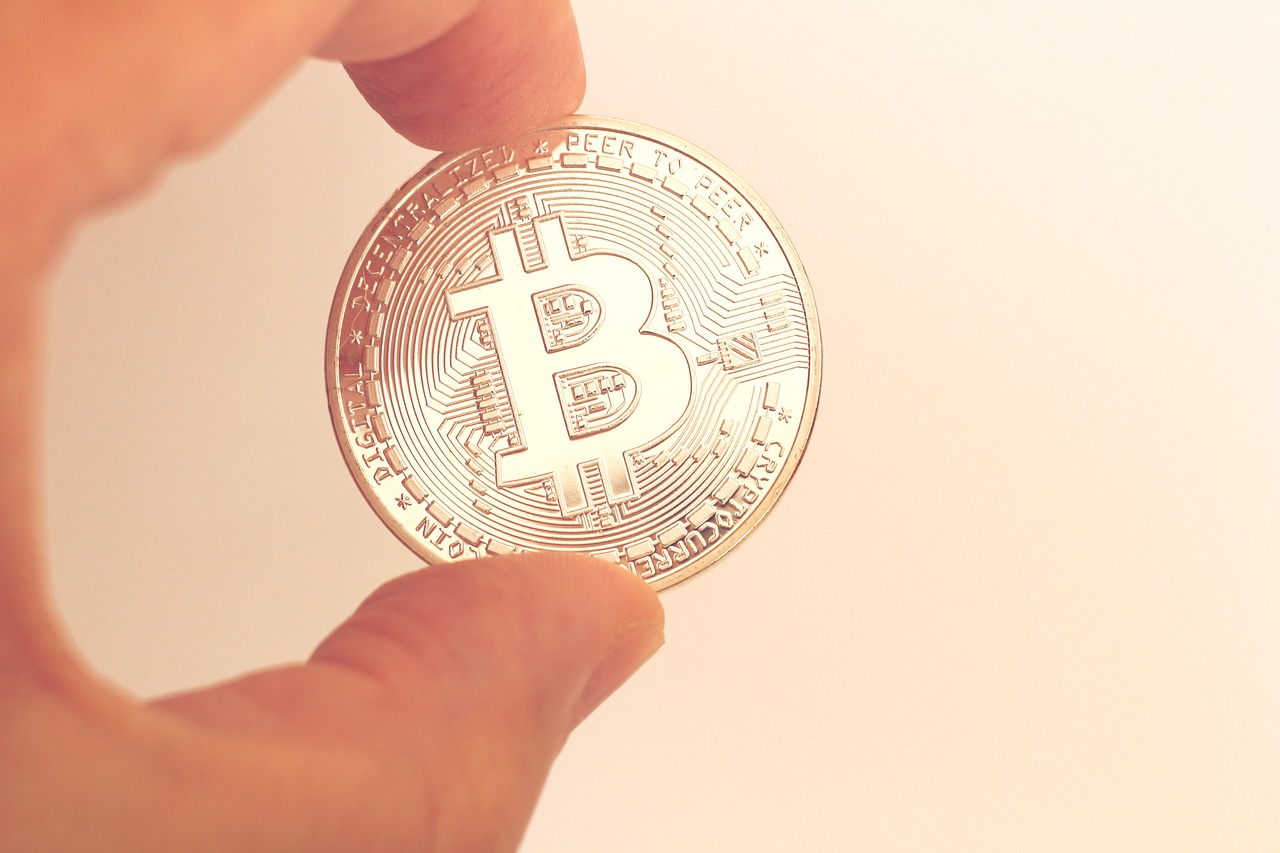
Bitcoin: The Pioneer
Bitcoin, the first cryptocurrency ever created, was launched in 2009 by an anonymous figure known as Satoshi Nakamoto. This digital currency was revolutionary, introducing a decentralized form of currency that operates without the need for a central authority. Imagine a world where you can send money across the globe in mere minutes, without the interference of banks or governments. That's the magic of Bitcoin!
At its core, Bitcoin operates on a technology called blockchain, which is a distributed ledger that records all transactions across a network of computers. This ensures transparency and security, as every transaction is visible to all participants and cannot be altered without consensus. The decentralized nature of Bitcoin means that no single entity can control it, making it resistant to censorship and fraud. It's like having a digital vault that you can access from anywhere in the world, without needing a key from a bank.
Bitcoin's journey has been nothing short of spectacular. It started with a modest value of just a few cents and has surged to an all-time high of over $60,000 in 2021. This meteoric rise has attracted millions of investors, from individuals to institutional giants. But what factors contribute to Bitcoin's enduring dominance in the market? Here are a few key points:
- Scarcity: Bitcoin has a capped supply of 21 million coins, creating a sense of scarcity that drives demand.
- Adoption: Major companies and financial institutions are increasingly adopting Bitcoin as a legitimate form of payment and investment.
- Brand Recognition: As the first cryptocurrency, Bitcoin enjoys unparalleled brand recognition, often being referred to as "digital gold."
Despite its success, Bitcoin is not without challenges. Its energy consumption has raised environmental concerns, leading to debates about its sustainability. Additionally, the volatility of Bitcoin's price can be daunting for new investors. However, its potential for long-term growth and the increasing acceptance of cryptocurrencies in mainstream finance continue to fuel interest and investment.
In summary, Bitcoin is not just a cryptocurrency; it's a pioneering force that has reshaped our understanding of money and value. As we venture further into the realm of digital currencies, Bitcoin remains a cornerstone of the cryptocurrency ecosystem, inspiring innovation and challenging traditional financial systems.
Q1: What is Bitcoin?
A1: Bitcoin is a decentralized digital currency created in 2009 that allows for peer-to-peer transactions without the need for intermediaries like banks.
Q2: How does Bitcoin work?
A2: Bitcoin operates on a technology called blockchain, which is a public ledger that records all transactions made with the currency.
Q3: Why is Bitcoin so valuable?
A3: Bitcoin's value is driven by factors such as its limited supply, increasing adoption, and the growing recognition of its potential as a store of value.
Q4: Is Bitcoin safe to invest in?
A4: While Bitcoin has shown significant growth, it is also highly volatile. Potential investors should conduct thorough research and consider their risk tolerance.
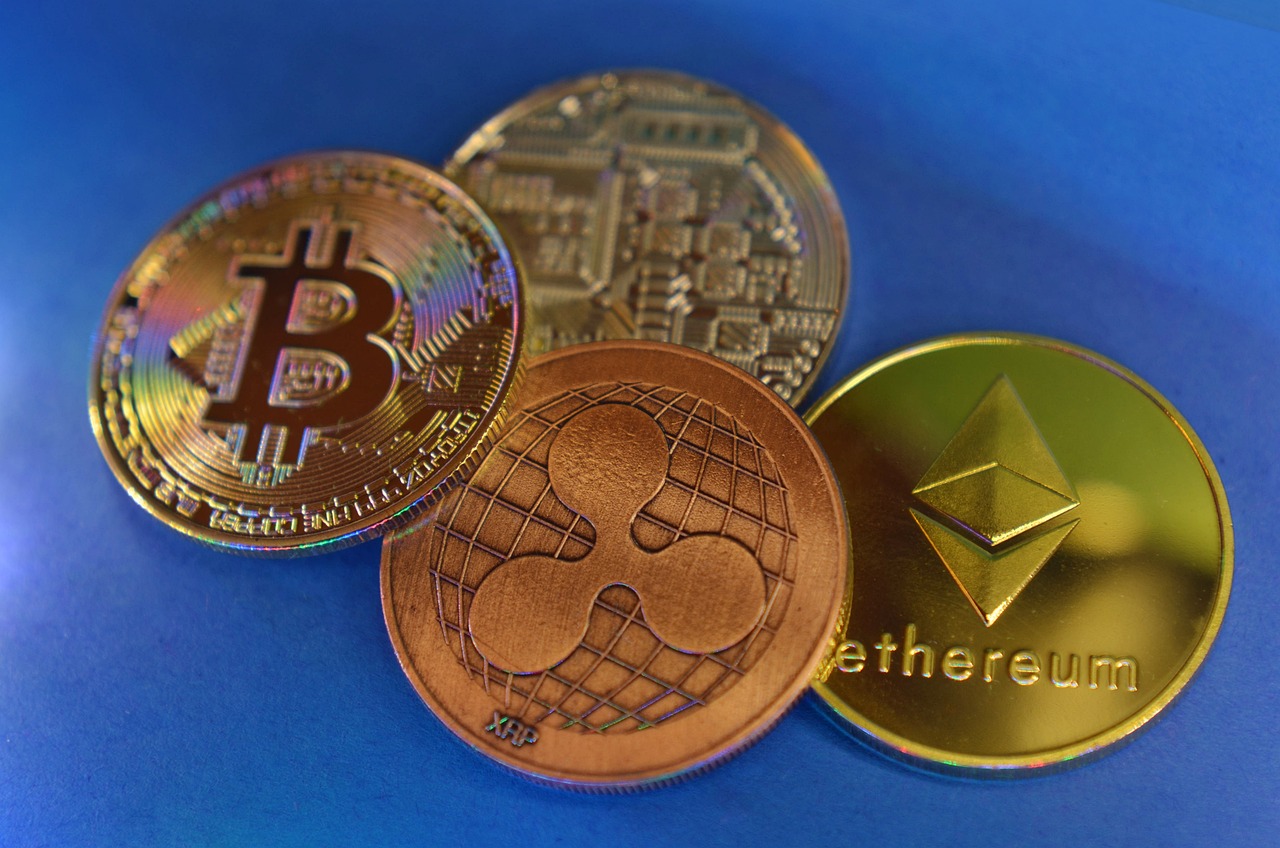
Ethereum: Smart Contracts Revolution
Ethereum, launched in 2015 by the visionary Vitalik Buterin, has revolutionized the way we think about blockchain technology. Unlike Bitcoin, which primarily serves as a digital currency, Ethereum introduced the concept of smart contracts. These self-executing contracts with the terms of the agreement directly written into code have opened up a world of possibilities, allowing developers to create decentralized applications (dApps) that run without the need for intermediaries. Imagine a world where you can execute agreements without a middleman, reducing costs and increasing efficiency. That's the power of Ethereum!
The Ethereum blockchain operates on a unique Proof of Stake (PoS) consensus mechanism, which not only enhances security but also significantly reduces energy consumption compared to traditional Proof of Work (PoW) systems. This transition to PoS, part of the Ethereum 2.0 upgrade, aims to make the network more scalable and sustainable. With the ability to process thousands of transactions per second, Ethereum is poised to tackle the challenges of scalability that have plagued many blockchain networks, especially during peak usage times.
One of the standout features of Ethereum is its robust ecosystem. Developers are constantly innovating, creating new dApps across various sectors, including finance, gaming, and supply chain management. Some popular use cases include:
- Decentralized Finance (DeFi): Platforms like Uniswap and Aave allow users to trade, lend, and borrow cryptocurrencies without traditional banks.
- Non-Fungible Tokens (NFTs): Ethereum is the backbone of the booming NFT market, enabling artists and creators to tokenize their work.
- Decentralized Autonomous Organizations (DAOs): These organizations operate through smart contracts, allowing members to vote on decisions without centralized control.
The impact of Ethereum on the broader blockchain landscape cannot be overstated. It has inspired countless other projects and has become the go-to platform for developers looking to build on blockchain technology. However, the journey hasn't been without its challenges. The network has faced scalability issues, high gas fees, and competition from other platforms like Solana and Binance Smart Chain. Nevertheless, Ethereum's commitment to continuous improvement and innovation keeps it at the forefront of the cryptocurrency space.
In conclusion, Ethereum's introduction of smart contracts has not only revolutionized how we interact with digital assets but has also paved the way for a new era of decentralized applications. As the technology continues to evolve, the possibilities are limitless. Whether you're a seasoned investor or just starting to explore the world of cryptocurrencies, understanding Ethereum's role in this revolution is essential to grasping the future of digital finance.
- What are smart contracts?
Smart contracts are self-executing contracts with the terms of the agreement directly written into code. They automatically execute actions when predefined conditions are met. - How does Ethereum differ from Bitcoin?
While Bitcoin is primarily a digital currency, Ethereum is a platform that enables developers to build decentralized applications using smart contracts. - What is Ethereum 2.0?
Ethereum 2.0 is an upgrade to the Ethereum network that aims to improve scalability, security, and sustainability by transitioning from Proof of Work to Proof of Stake.
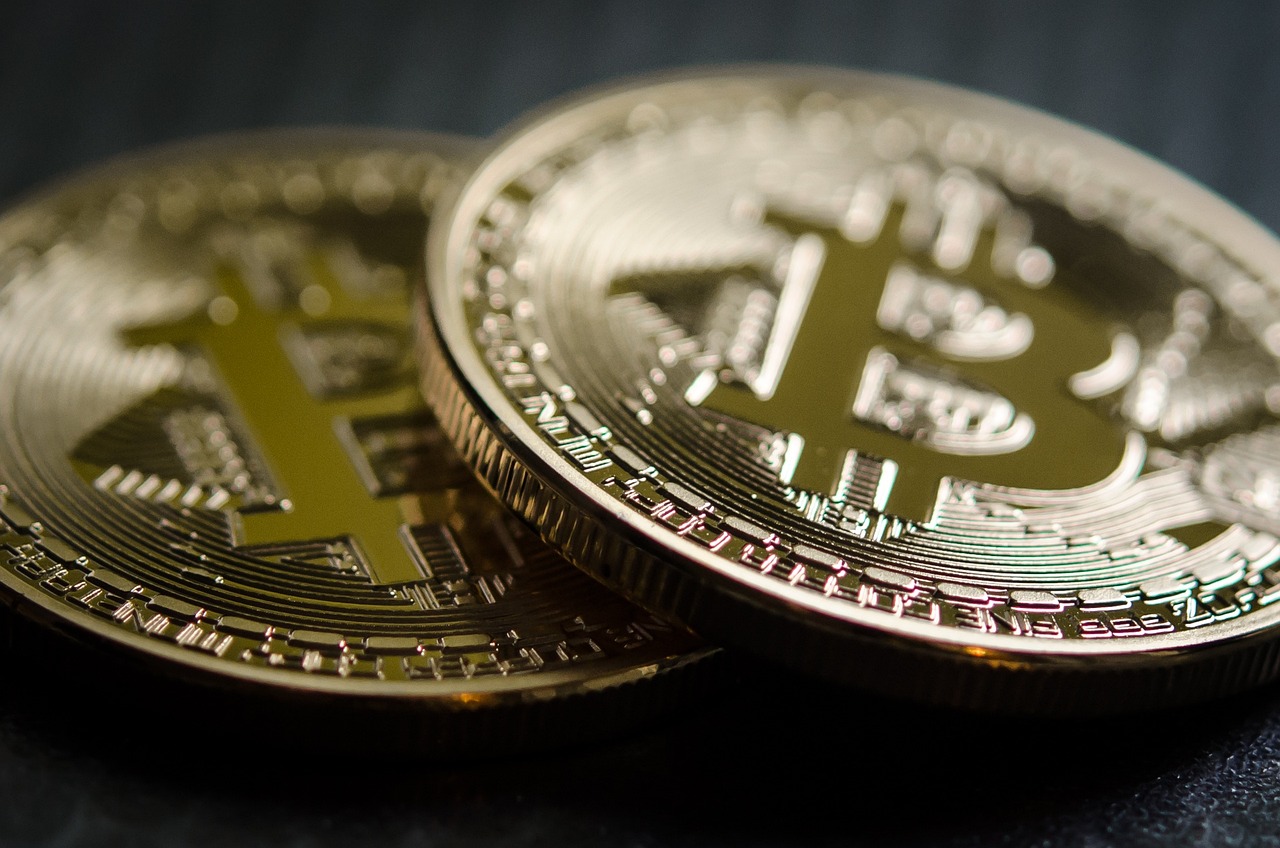
Tether: The Stablecoin Phenomenon
Tether (USDT) has emerged as a significant player in the cryptocurrency market, acting as a crucial bridge between traditional fiat currencies and the volatile world of digital assets. Launched in 2014, Tether is classified as a stablecoin, which means it is designed to maintain a stable value, typically pegged to the US dollar. This stability makes it an attractive option for traders and investors seeking to mitigate the risks associated with cryptocurrency price fluctuations.
So, how does Tether manage to keep its value stable? The answer lies in its underlying mechanism. Tether claims that for every USDT token issued, there is an equivalent amount of fiat currency held in reserve. This 1:1 backing is what gives Tether its stability and allows users to trade it as if it were a dollar. However, the transparency of Tether's reserves has been a topic of heated debate. Critics have raised concerns about whether Tether actually holds sufficient reserves to back all issued tokens, leading to questions about its reliability as a stablecoin.
Despite these controversies, Tether has become an essential tool for traders. Here are some of the key reasons why:
- Liquidity: Tether is one of the most traded cryptocurrencies, providing high liquidity for traders looking to enter and exit positions quickly.
- Market Access: Tether allows users to access the cryptocurrency market without needing to convert their fiat currencies into digital assets directly.
- Hedging: Traders can use Tether to hedge against market volatility by converting their cryptocurrencies into USDT during downturns.
Moreover, Tether's integration across various exchanges and platforms has solidified its position as the go-to stablecoin. It is commonly used for trading pairs and is often the first choice for converting other cryptocurrencies back into fiat. This widespread adoption has further reinforced its importance in the crypto ecosystem.
However, the journey of Tether hasn't been without bumps. Regulatory scrutiny has increased, particularly as authorities seek to understand the implications of stablecoins on the financial system. In 2021, Tether faced a significant legal settlement, which raised eyebrows about its operational practices and reserve management. This has led to calls for greater transparency and regulation in the stablecoin space.
Looking ahead, the future of Tether and stablecoins, in general, appears promising. As the cryptocurrency market continues to mature, the demand for stable, reliable assets will likely grow. Tether's role as a stablecoin is crucial, but it also highlights the need for regulatory frameworks that ensure transparency and accountability. Will Tether be able to maintain its dominance amidst increasing competition from other stablecoins? Only time will tell, but one thing is for sure: Tether has carved out a unique niche in the world of digital currencies.
- What is Tether? Tether is a stablecoin pegged to the US dollar, designed to maintain a stable value in the cryptocurrency market.
- How does Tether maintain its value? Tether claims to hold an equivalent amount of fiat currency in reserves for every USDT token issued, ensuring a 1:1 backing.
- Is Tether safe to use? While Tether is widely used and offers liquidity, concerns about its reserve transparency have led some to question its safety.
- Why is Tether important in trading? Tether provides liquidity, market access, and a means to hedge against volatility, making it a vital tool for traders.

Binance Coin: Utility and Growth
Binance Coin (BNB) has made quite a splash in the cryptocurrency world since its inception in 2017. Initially launched as a utility token for the Binance exchange, BNB has rapidly evolved into a multifaceted cryptocurrency with a plethora of use cases. But what exactly makes BNB so special? Let’s dive into its journey, features, and the factors contributing to its impressive growth.
At its core, Binance Coin was created to facilitate transactions on the Binance platform. Users could enjoy reduced trading fees by paying with BNB, which was a game-changer for frequent traders. This incentive not only attracted new users to the exchange but also helped establish a solid foundation for BNB's value. Over time, Binance has expanded its ecosystem, and BNB has grown alongside it, becoming integral to various services offered by the platform, including Binance Smart Chain (BSC), which allows developers to build decentralized applications (dApps).
One of the most compelling features of Binance Coin is its deflationary model. Binance employs a quarterly token burn mechanism, where a portion of the total supply of BNB is permanently removed from circulation. This strategy not only increases scarcity but also has a positive impact on the token's price over time. For example, in the first quarter of 2021 alone, Binance burned over 3 million BNB tokens, a move that thrilled investors and highlighted the exchange's commitment to maintaining a healthy ecosystem.
Furthermore, the versatility of BNB extends beyond trading fees. Users can utilize BNB for various purposes, including:
- Transaction fees: Pay for transactions on Binance Smart Chain.
- Token sales: Participate in token sales on Binance Launchpad.
- Travel bookings: Use BNB to book flights and hotels through partnered services.
- Charity donations: Contribute to charitable causes using BNB.
As Binance continues to innovate, the demand for BNB has surged, leading to a significant increase in its market capitalization. The coin has consistently ranked among the top cryptocurrencies globally, often competing with giants like Ethereum and Bitcoin. This growth can also be attributed to the expanding Binance ecosystem, which includes Binance Academy, Binance Launchpad, and Binance NFT, all of which leverage BNB for various functionalities.
However, it's essential to acknowledge the challenges faced by Binance Coin. Regulatory scrutiny has increased as governments worldwide tighten their grips on cryptocurrency exchanges. This has led to uncertainty regarding Binance's operations in certain regions, which may affect BNB's price and usage. Nevertheless, Binance has shown resilience, adapting to regulatory changes and maintaining a strong user base.
In conclusion, Binance Coin stands out not just as a utility token but as a symbol of growth and adaptability in the ever-evolving cryptocurrency landscape. With its diverse use cases, deflationary model, and the backing of one of the largest exchanges in the world, BNB is poised for continued success. As always, potential investors should conduct thorough research and consider market conditions before diving into the crypto space.
1. What is Binance Coin (BNB)?
Binance Coin is the native cryptocurrency of the Binance exchange, initially created to reduce trading fees and facilitate transactions on the platform. Over time, it has expanded its use cases significantly.
2. How does the token burn mechanism work?
Binance conducts quarterly token burns, where a portion of BNB is permanently removed from circulation, increasing scarcity and potentially driving up the price.
3. Can I use BNB outside of the Binance exchange?
Yes, BNB can be used for various purposes, including transaction fees on Binance Smart Chain, participating in token sales, and even booking travel services.
4. Is BNB a good investment?
As with any investment, it’s crucial to conduct your own research and consider market trends before investing in BNB or any cryptocurrency.
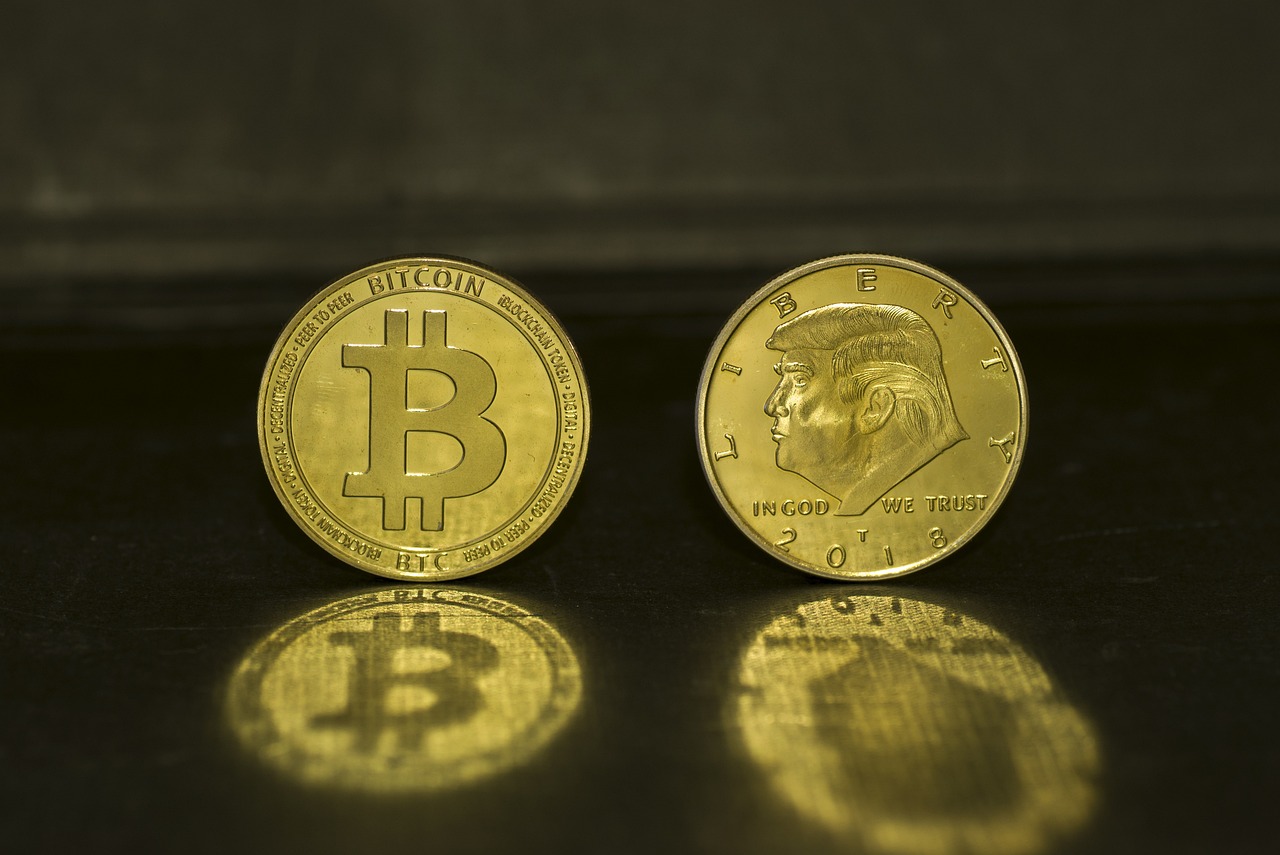
Cardano: A Research-Driven Approach
Cardano is not just another cryptocurrency; it’s a project that stands out due to its research-driven approach. Founded by Charles Hoskinson, one of the co-founders of Ethereum, Cardano aims to create a more secure and scalable blockchain platform. What sets Cardano apart is its commitment to rigorous academic research and peer-reviewed development. This means that every aspect of the project is backed by scientific evidence, ensuring that the technology is robust and reliable.
At the core of Cardano’s philosophy is the idea that blockchain technology should be developed in a way that is both transparent and sustainable. This is why Cardano employs a unique two-layer architecture: the Cardano Settlement Layer (CSL) and the Cardano Computation Layer (CCL). The CSL handles the cryptocurrency transactions, while the CCL is responsible for smart contracts and decentralized applications. This separation allows for greater flexibility and scalability, making it easier to upgrade the network without disrupting ongoing transactions.
One of the standout features of Cardano is its consensus mechanism, known as Ouroboros. Unlike traditional proof-of-work systems, Ouroboros is a proof-of-stake protocol that significantly reduces the energy consumption associated with mining. This not only makes Cardano more environmentally friendly but also enhances its security. The protocol has been peer-reviewed and is considered one of the most secure methods of achieving consensus in a decentralized network.
As for its potential, Cardano is designed to be highly scalable. With the ability to process thousands of transactions per second, Cardano aims to compete with established giants like Ethereum. Its goal is to make blockchain technology accessible to everyone, particularly in developing countries where financial systems are often lacking. By providing a platform that can support a variety of applications—from supply chain management to voting systems—Cardano is positioning itself as a leader in the blockchain space.
Moreover, Cardano’s community is actively involved in its development. The project operates on a decentralized governance model, allowing ADA holders to vote on proposed changes and improvements to the network. This democratic approach not only fosters a sense of ownership among its users but also ensures that the network evolves according to the needs of its community.
In summary, Cardano’s research-driven approach, combined with its innovative technology and community involvement, makes it a compelling option for investors and developers alike. As the cryptocurrency landscape continues to evolve, Cardano is poised to play a significant role in shaping the future of blockchain technology.
- What makes Cardano different from other cryptocurrencies?
Cardano's research-driven approach and unique two-layer architecture set it apart from many other cryptocurrencies. - How does Cardano ensure security?
Cardano uses the Ouroboros proof-of-stake consensus mechanism, which is designed to be secure and energy-efficient. - Can I use Cardano for smart contracts?
Yes, Cardano supports smart contracts through its Computation Layer, allowing developers to build decentralized applications. - What is the future of Cardano?
With its focus on scalability and sustainability, Cardano aims to become a leading platform for blockchain applications globally.
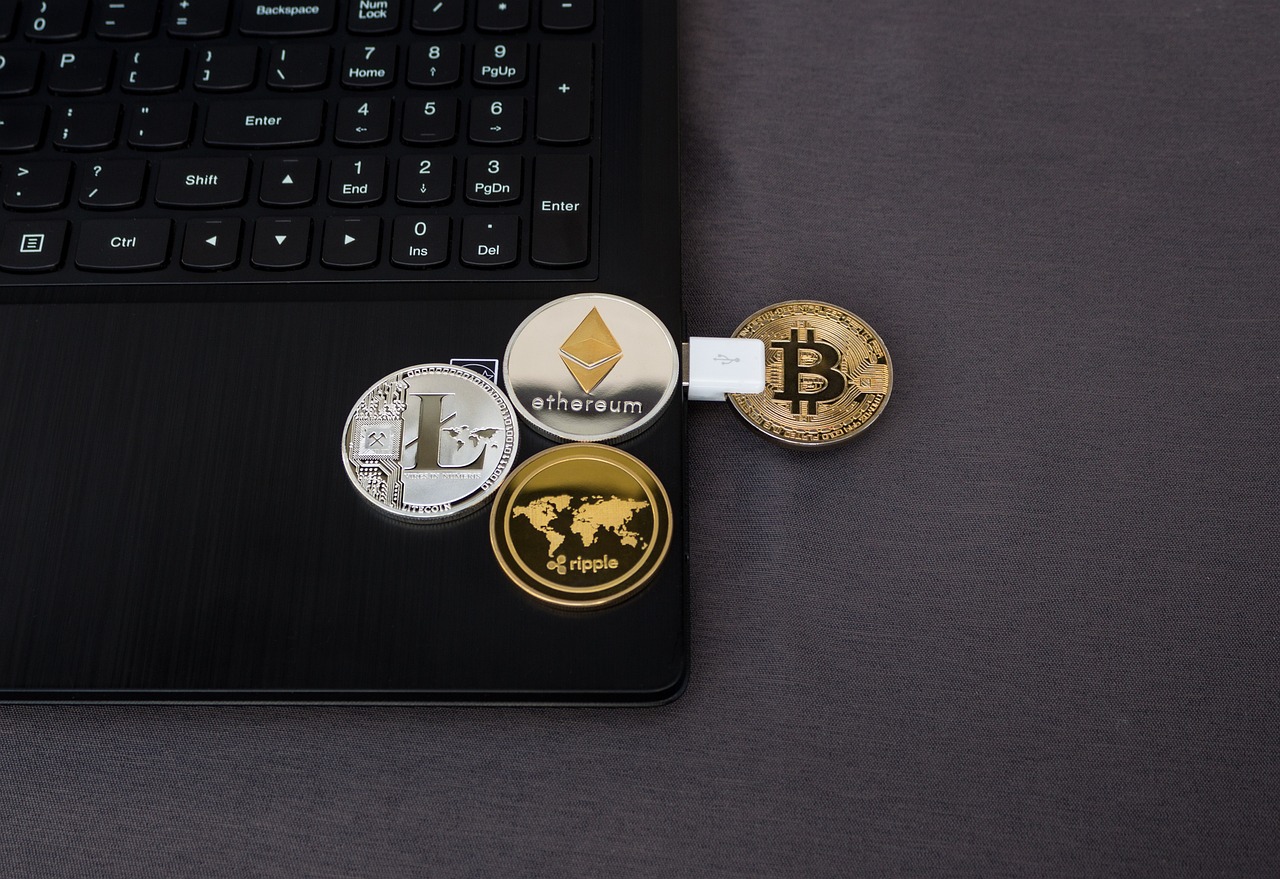
Solana: Speed and Scalability
When it comes to the world of cryptocurrencies, speed and scalability are the names of the game, and Solana is like a sprinter in a marathon. Launched in 2020, Solana has quickly gained traction, boasting one of the fastest transaction speeds in the industry. Imagine being able to process around 65,000 transactions per second—that’s what Solana offers, making it a formidable contender against established giants like Ethereum. But how does it achieve such impressive performance? Let’s dive deeper!
At the heart of Solana’s architecture is a unique consensus mechanism called Proof of History (PoH). This innovative approach allows the network to timestamp transactions, creating a verifiable history that can be easily checked. Think of it as a digital clock that synchronizes all participants in the network, ensuring that everyone is on the same page regarding the order of transactions. This not only speeds up the process but also enhances the network's overall efficiency.
Moreover, Solana's architecture is designed to handle a massive number of transactions without compromising on speed or cost. The platform boasts low transaction fees, typically around $0.00025 per transaction. This is a game-changer for developers and users alike, as it opens the door for a wide array of applications, from decentralized finance (DeFi) to non-fungible tokens (NFTs). With such low costs, users can engage in microtransactions without worrying about exorbitant fees eating into their profits.
But it’s not just about speed and cost; Solana’s ecosystem is rapidly expanding. Developers are flocking to the platform to build decentralized applications (dApps) that leverage its capabilities. Currently, Solana hosts a vibrant community of projects, including decentralized exchanges, lending platforms, and NFT marketplaces. This growing ecosystem is a testament to Solana's potential and its ability to attract talent and innovation.
In terms of scalability, Solana employs a series of optimizations that allow it to maintain performance as the network grows. For instance, its architecture can accommodate more nodes without a significant drop in transaction speeds. This means that as more users join the network, Solana can handle the increased load without breaking a sweat. In a world where many blockchains struggle with congestion during peak times, Solana stands out as a reliable option.
However, it's essential to consider the challenges that come with such rapid growth. As Solana continues to expand, it faces the ongoing challenge of maintaining its speed and efficiency. Network outages and congestion have been reported in the past, raising questions about its long-term reliability. Nevertheless, the team behind Solana is actively working on solutions to address these issues, ensuring that the platform remains robust as it scales.
In conclusion, Solana represents a new frontier in the blockchain space, offering unparalleled speed and scalability that could redefine how we think about cryptocurrencies. Its innovative technology and expanding ecosystem make it a compelling choice for both developers and investors. If you’re looking to explore the future of digital currencies, Solana is definitely a name to watch.
- What makes Solana different from other cryptocurrencies? Solana's unique Proof of History consensus mechanism allows for high transaction speeds and low fees, distinguishing it from many other platforms.
- Can Solana handle large volumes of transactions? Yes, Solana can process up to 65,000 transactions per second, making it one of the fastest blockchains available.
- What types of applications can be built on Solana? Developers can create a wide range of applications, including DeFi platforms, NFT marketplaces, and more, thanks to its scalable architecture.
- Are there any risks associated with investing in Solana? Like any investment, there are risks involved. Network outages and scalability challenges have been noted, but the Solana team is actively working to address these issues.

XRP: The Cross-Border Solution
XRP has carved out a niche in the cryptocurrency landscape as a promising solution for cross-border transactions. In a world where the need for quick and affordable international money transfers is ever-increasing, XRP stands out due to its unique features and technological advantages. Its primary goal is to facilitate rapid, low-cost transactions across borders, making it an attractive option for both consumers and financial institutions.
At the core of XRP's functionality is the XRP Ledger, a decentralized blockchain technology that allows for seamless transactions. Unlike traditional banking systems that can take days to process international payments, XRP transactions are confirmed in mere seconds, which is a game-changer for businesses and individuals alike. This speed is achieved through a consensus mechanism that eliminates the need for mining, thus reducing transaction costs significantly.
One of the most compelling aspects of XRP is its partnerships with various financial institutions. Major banks and payment providers have recognized the potential of XRP to streamline their operations. For instance, companies like American Express and Santander have explored using XRP for their cross-border payment solutions. These partnerships not only enhance XRP's credibility but also pave the way for wider adoption in the financial sector.
However, XRP is not without its challenges. The ongoing legal battle with the U.S. Securities and Exchange Commission (SEC) has raised questions about its regulatory status. The SEC claims that XRP is a security, which has led to significant market volatility and uncertainty. This situation has prompted many investors to be cautious, as the outcome of the lawsuit could have far-reaching implications for XRP's future.
Despite these hurdles, XRP continues to be a vital player in the cryptocurrency market. Its ability to provide a cost-effective and efficient solution for cross-border payments makes it a valuable asset for those looking to navigate the complexities of international finance. As the world becomes more interconnected, the demand for such solutions is likely to grow, positioning XRP as a key player in the future of digital transactions.
In summary, XRP's innovative approach to cross-border payments, coupled with its strategic partnerships, highlights its potential as a leading cryptocurrency in the financial landscape. While regulatory challenges loom, the technology behind XRP offers a glimpse into the future of how we might conduct international transactions.
- What is XRP? XRP is a digital currency designed for fast and low-cost international money transfers.
- How does XRP facilitate cross-border transactions? XRP uses a decentralized blockchain called the XRP Ledger, allowing for quick confirmations and low transaction fees.
- What are the current challenges facing XRP? XRP is currently involved in a legal dispute with the SEC, which has created uncertainty regarding its regulatory status.
- Who are XRP's partners? Notable partners include American Express and Santander, which are exploring the use of XRP for their payment solutions.
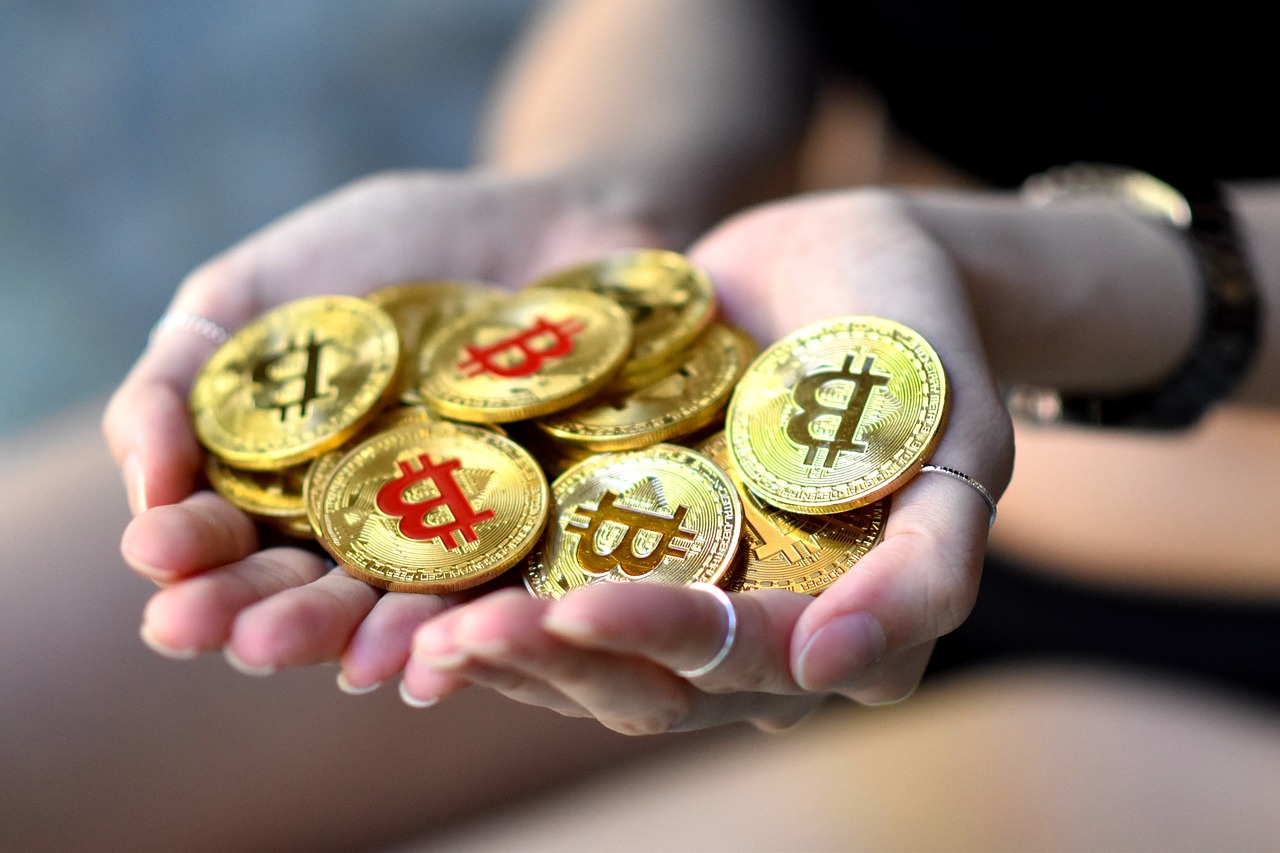
Polkadot: Interoperability and Innovation
Polkadot is making waves in the cryptocurrency world with its revolutionary approach to interoperability. Imagine a world where different blockchains can communicate seamlessly, sharing data and value without the usual barriers that slow down traditional systems. That’s the vision behind Polkadot, which aims to create a web where various blockchains can work together like a well-oiled machine. This is a game changer because, in the current landscape, most blockchains operate in isolation, limiting their potential and the overall efficiency of the blockchain ecosystem.
At the heart of Polkadot's architecture is its unique structure that includes a central relay chain and multiple parachains. The relay chain acts as the backbone, ensuring security and consensus, while the parachains are specialized blockchains that can be customized for specific use cases. This setup not only enhances scalability but also allows developers to innovate without the constraints of a single blockchain’s limitations. Think of it as a highway system where each lane is a different blockchain, all connected and capable of sharing traffic efficiently.
One of the standout features of Polkadot is its shared security model. This means that all connected parachains benefit from the security provided by the relay chain, reducing the risk of attacks and increasing trust among users. This is particularly appealing for new projects that may not have the resources to build their own security protocols from scratch. With Polkadot, they can focus on innovation and development while relying on the robust security of the relay chain.
Moreover, Polkadot employs a unique governance system that empowers its community. Holders of the DOT token, which is the native currency of the Polkadot network, can participate in decision-making processes regarding upgrades and changes to the network. This democratic approach ensures that the platform evolves in line with the needs and desires of its users, fostering a sense of ownership and responsibility within the community.
As we look at the potential of Polkadot, it’s essential to consider the various use cases it enables. From decentralized finance (DeFi) applications to non-fungible tokens (NFTs) and beyond, the possibilities are vast. Developers can create tailored solutions that leverage the strengths of different blockchains, leading to more innovative and efficient applications. For instance, a DeFi project could utilize the speed of one parachain while tapping into the security features of another, creating a hybrid model that maximizes performance.
To illustrate Polkadot's potential, let’s take a look at a few key metrics that highlight its impact on the blockchain space:
| Metric | Value |
|---|---|
| Current Market Capitalization | $X billion |
| Number of Parachains Launched | X |
| Average Transaction Speed | X transactions per second |
| Community Governance Participation Rate | X% |
In conclusion, Polkadot is not just another cryptocurrency; it’s a vision for a more interconnected blockchain future. By facilitating interoperability and fostering innovation through its unique architecture and governance model, Polkadot is poised to play a crucial role in the evolution of digital currencies. As we continue to explore the potential of blockchain technology, Polkadot stands out as a beacon of what’s possible when different systems work together seamlessly.
- What is Polkadot? Polkadot is a multi-chain blockchain platform that enables different blockchains to communicate and share information.
- How does Polkadot ensure security? Polkadot uses a shared security model where all parachains benefit from the security of the relay chain.
- What is the role of the DOT token? The DOT token is used for governance, staking, and bonding within the Polkadot network.
- Can developers create their own parachains? Yes, developers can build customized parachains tailored to specific applications and use cases.
- How does Polkadot facilitate scalability? By allowing multiple parachains to operate concurrently, Polkadot enhances transaction throughput and reduces congestion.
Frequently Asked Questions
- What is market capitalization in cryptocurrency?
Market capitalization, or market cap, is a crucial metric that indicates the total value of a cryptocurrency. It's calculated by multiplying the current price of a coin by its circulating supply. Understanding market cap helps investors gauge the size and stability of a cryptocurrency in the market.
- Why is Bitcoin considered the pioneer of cryptocurrencies?
Bitcoin is regarded as the first cryptocurrency, launched in 2009 by an anonymous entity known as Satoshi Nakamoto. Its groundbreaking technology and decentralized nature paved the way for thousands of other cryptocurrencies. Bitcoin's longevity and widespread acceptance contribute to its status as the market leader.
- What makes Ethereum unique compared to other cryptocurrencies?
Ethereum stands out due to its introduction of smart contracts, which enable automated agreements without intermediaries. This innovation has led to a vibrant ecosystem of decentralized applications (dApps) and has significantly influenced the blockchain space, making it a key player beyond just a currency.
- How does Tether maintain its value?
Tether is a stablecoin designed to maintain a 1:1 value with the US dollar. It achieves this by holding reserves that back each Tether token, providing stability in a volatile market. However, its transparency regarding these reserves has been a topic of controversy and scrutiny.
- What role does Binance Coin play in the Binance ecosystem?
Binance Coin (BNB) started as a utility token for the Binance exchange, allowing users to pay for trading fees at a discount. Over time, it has evolved into a versatile cryptocurrency with various use cases, including staking, token sales, and even purchasing goods and services.
- What is Cardano's approach to blockchain development?
Cardano takes a research-driven approach to blockchain development, emphasizing academic rigor and peer-reviewed processes. This focus on scalability, sustainability, and interoperability aims to create a robust platform for the development of decentralized applications and smart contracts.
- Why is Solana gaining attention in the crypto space?
Solana is gaining traction due to its high transaction speeds and low fees, making it an attractive option for developers and users alike. Its unique consensus mechanism, called Proof of History, allows it to process thousands of transactions per second, positioning it as a competitor to Ethereum.
- What is XRP's primary use case?
XRP is designed to facilitate fast and cost-effective cross-border transactions. By partnering with financial institutions, XRP aims to streamline international payments, making them quicker and more efficient than traditional banking methods.
- How does Polkadot enhance blockchain interoperability?
Polkadot enables different blockchains to communicate and share information through its unique architecture. By allowing multiple blockchains to operate in parallel, Polkadot enhances scalability and fosters innovation, potentially transforming how blockchain networks interact with each other.















